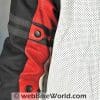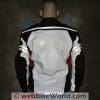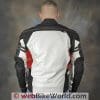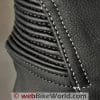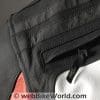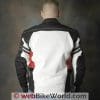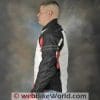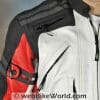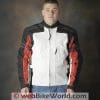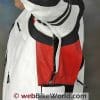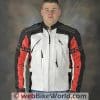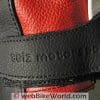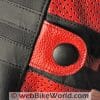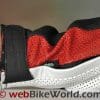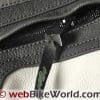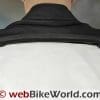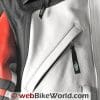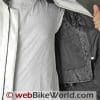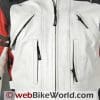The Teiz Motorsports Tioga perforated leather jacket and the Camino non-perforated leather jacket have the styling and comfort of textile and the protection of leather, all at a relatively low price. The Teiz Motorsports Cross Continent textile mesh one-piece suit was reviewed on webBikeWorld just about one year ago.
Teiz was a new company at that time and the Cross Continent suit was one of their first products and it was and is a unique item that has proven to be popular with owners. Teiz has greatly expanded their product lineup since then; the Teiz Motorsports Tioga and Camino leather jackets can be considered a yin yang pair that are very similar in their overall styling, fit and comfort. The Tioga is designed for warm-weather riding, with large swaths of perforated leather and no insulating liner.
The Camino jacket is non-perforated leather (I hesitate to call it “solid leather”) with a removable insulating liner, suited for cooler weather. Both jackets will zip to the optional Teiz Motorsports Platina leather or Mesa perforated leather pants, both of which include suspenders for support and comfort. Teiz also offers a substantial discount if the pants are purchased with a jacket.
Both of these jackets have the same styling, comfort and fit, with the main differences being the perforated leather on the Tioga jacket and the extra vents and insulating liner in the Camino. I’ll first describe the features that both jackets have in common, then I’ll cover the individual features on each. One thing’s for certain: it is difficult to choose between the two! They’re both very comfortable and they have a very nice profile and fit.
The cut and fit is similar to what one might expect from a textile jacket, but interpreted for leather. I think this makes these Teiz Motorsports jackets unique; the familiar cut and fit of a textile jacket but in leather, which probably gives more protection than just about any textile available. Bonus: you get that nice leather smell!
Tioga and Camino Jacket Shared Features
The most obvious shared features between the two jackets is the styling and color. Both jackets share the same look; I’d describe it as a “V” shaped overall profile, which does a great job at flattering the figure (i.e., hiding that overgrown mid-section!).
This is due to a combination of the way the leather is cut and also the vertical orientation of the colored panels.
The colors are also shared with either the white red and black trimmed version shown here or an all-black version also available.
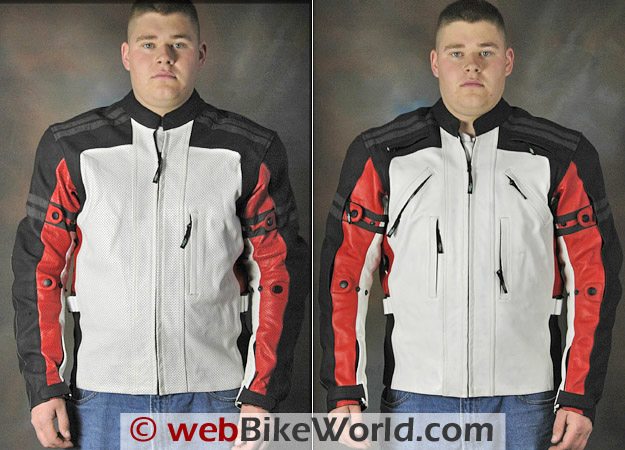


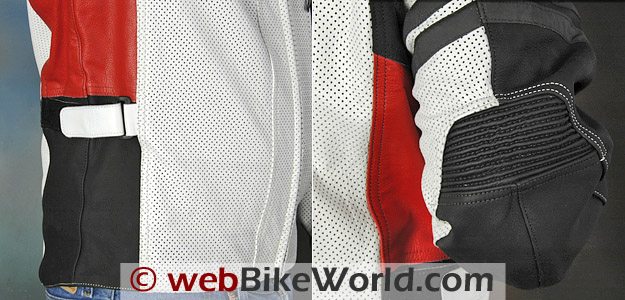


Leather vs. Perforated Leather
I think the white with red and black makes for a very handsome look and I can definitely tell the difference in temperature comfort, now that the weather has gone from icy cold, windy and snowy to bumping 90 degrees F within a space of only a couple of weeks.
In fact, I’ve been wearing the Tioga perforated leather version almost every day, and it flows about as much air as one needs in these temperatures.
I feel much more secure wearing it than any textile mesh jacket and the added bonus is that the white and the very vibrant red color surely add to my visibility when riding.
The leather quality on both jackets is very good, although the perforations on the Tioga make it more difficult to see the very nice pebbled grain that is apparent on the Camino jacket.
The combination of white-as-white-can-get with black and red make for a very difficult camera session, so the photos here don’t really do it justice. We have a couple of close-ups that give you an idea of the leather quality though.
The white looks shinier in the photos than it is “in the flesh”, where all three colors have what I’d call an eggshell finish that gives the leather its nice look.
Teiz Motorsports lists the leather thickness as 1.1 to 1.2 mm for both jackets (both are cow hide) but the perforated Tioga of course has a different feel from the non-perforated Camino leather.
Both feel substantial but the Camino has that indefinable leather factor that makes one feel very secure. Let’s just say that if I have to take a luge run down the road one day, I hope I’m wearing it!
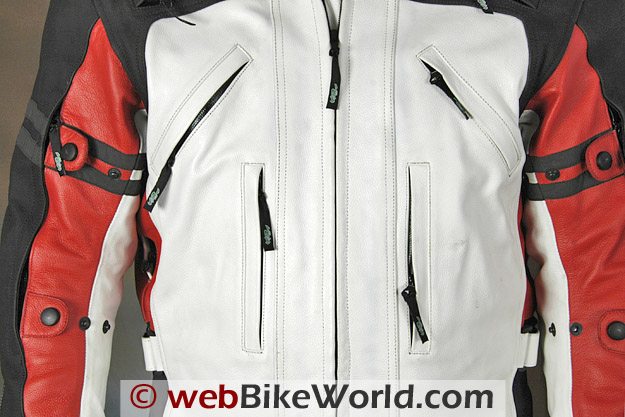


Jacket Colors
The colors on both jackets are one of their most defining features, and the white, red and black are very nicely done. I’m sure there’s more to dying leather than I can ever know.
The red also is a pure red tone; it shows in the photos probably over-saturated, more like an orange, but in reality it is the definition of red. The white also is really something to see; I’m not sure I’ve seen such a pure white tone on leather before.
Surely this combination has to provide much, much better visibility to the rider than the “classic” black leather jacket!
There is a downside however; the white leather will show dirt rather quickly.
But I discovered that the V2 visor cleaning sponge (review) I keep handy does a good job at cleaning the leather if necessary after a ride.
I think a regular damp sponge or one of those Mr. Clean cleaning sponges would also work, but I just happen to carry a V2 with me most of the time, especially in the spring and summer, during bug season.
There is most likely some type of Teflon-based or other leather treatment that might help protect the white leather from dirt and/or make it easier to clean, like the Leatherguard leather treatment (review). I wish I still had a can of the stuff.
But in the meantime, it’s not that big of a problem for me anyway and the benefits of improved visibility and temperature reduction far outweigh any disadvantages.
Zippers
Both jackets use YKK zippers in the front for the main entry. The zipper is the YKK coil type, which works fine in this application. I think a toothed zipper might look less sophisticated with the styling of the jacket; the black coil zipper is nicely camouflaged because the coil pins form a tight bond.
Both jackets have full-length and 8″ internal zippers for attachment to the Teiz Motorsports Platina non-perforated leather or Mesa perforated leather pants. These are YKK toothed zippers of the heavy nylon type.
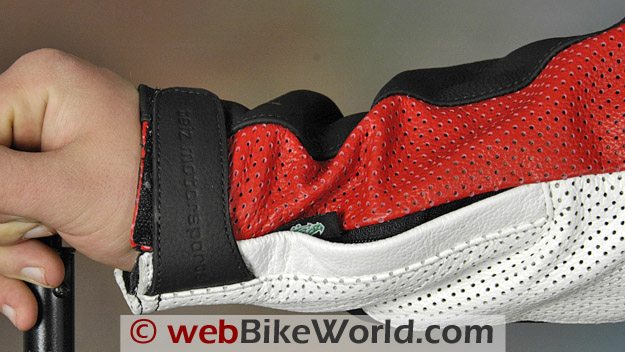


Teiz Motorsports Tioga Jacket Sleeves
Both jackets have sleeve adjusters at the forearm just below the elbow and at the upper arm. These are metal snaps, attached to a thick section of leather, with plastic covers on the outer side. They snap tightly closed but are unlabeled as to brand.
Each adjuster has three positions and I think once the adjusters on the Tioga perforated jacket are set, they won’t need to be moved. Removing the liner from the Camino jacket may require a tightening up to the next snap to account for the extra room.
The sleeves on both of these jackets, which are size XL, feel snug and especially so on the Camino when the liner is inserted; not too tight but snug enough to keep the armor in place.
The sleeve cuffs on both jackets have a short unbranded coil zipper and a hook-and-loop section to cover the zipper end at the cuff end. The liner in the Camino ends several inches above the wrist, allowing the sleeves to be nicely tapered towards the end, which then allows them to fit inside a glove gauntlet.
Inside the cuffs, both jackets have a short 50 mm lining of some type of very soft leather or other material. This feels smooth and comfortable next to the skin and prevents chafing when the sleeve cuff is tightened inside a glove gauntlet.
The same lining is used in the neck of both jackets, a nice feature.
Waist Adjustment
Both the Tioga and Camino jackets have leather straps under each arm, backed with hook-and-loop, that allows adjustment at the waist. They’re easy to use and compliment the styling.
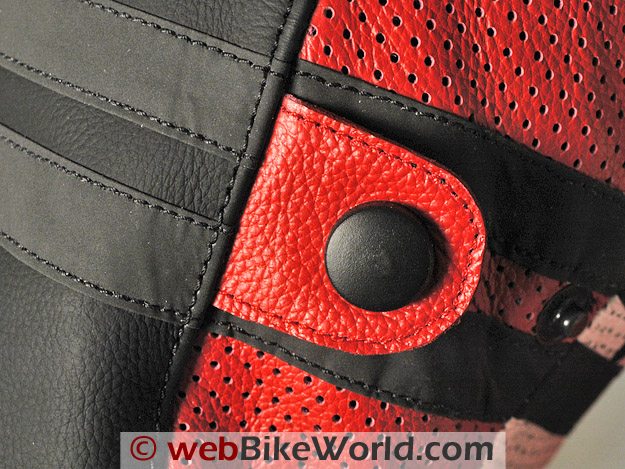


Jacket Lining
Both jackets have a permanent lightweight mesh lining on the inside, which protects the wearer from chafing from the seams and leather ends on the inside. The last 60 mm or so of the edges at the hems are lined with a type of nylon fabric material also.
Stitching
Both jackets have excellent quality stitching (of an indeterminate material type). The edges of the leather sections are rolled under and the stitches are straight and even with no loose ends.
The main leather sections are double-stitched with some blind stitches used down the arms, although the black leather is applied with a single row of stitching on each jacket.
An especially nice touch is the contrasting white stitching on the outside of the black section of the arms, which is a rather elegant compliment to the styling and reminds me of the type of stitching found on a baseball glove.
By the way, the elbows on both jackets have accordion pleats on the outside of the elbow. This material feels synthetic but only when it’s touched; otherwise it looks as part of the black leather used on the sleeve.
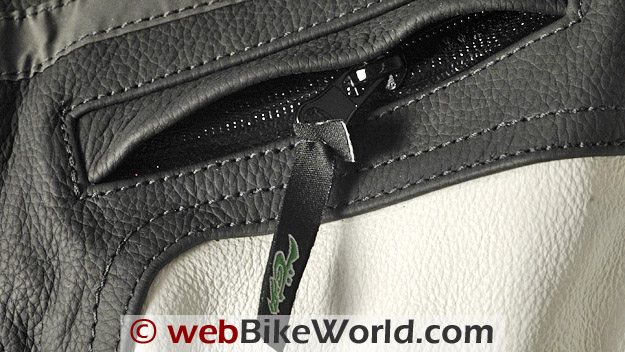


Armor and Padding
Teiz Motorsports says both jackets have CE-approved armor in the elbows and shoulders. The elbow armor feels comfortable; it has a generous scoop or hollow on the inside to fit the curvature of the arm. Both the elbow and shoulder armor sections feel substantial and they are removable.
Reflectivity
Both jackets have black reflective tape on the sleeves, shoulders and in the rear, although the material does not appear to be as reflective as “normal” (i.e., not black) reflective tape; see the slide show above for a view.
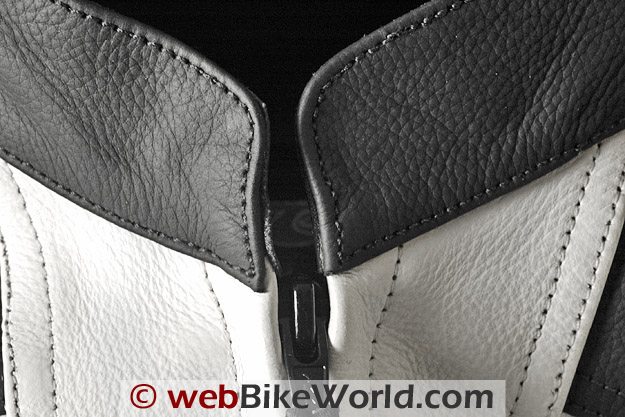


Tioga and Camino Jacket Differences
Well, I probably covered most of the features on both jackets, but let me take a minute to describe the individual features that differentiate the Tioga and Camino.
The most obvious is the perforated leather on the Tioga jacket.
Some may question whether a wind-blocking or insulating liner might have been added to this jacket, but I think there’s a danger of trying to get it to do too many things and ending up not excelling at any one, if you know what I mean.
I like the idea of having a highly perforated leather jacket that is designed with a very focused purpose: to provide protection for the rider in warm weather.
I’m sure there could be no more perforations added to the Tioga jacket, even if you wanted them. My experience with it so far has shown me that the jacket is a match for any other mesh textile I’ve tried — it flows that much air.
This makes the Tioga jacket my slight favorite of the two I think, because the need for a leather jacket that’s comfortable in warmer weather is acute and there just don’t seem to be as many choices as there are in textiles.
Add the white reflective surfaces, and you have a very nicely protective leather jacket that can be worn in the types of hot weather you might not have considered for this type of material previously.
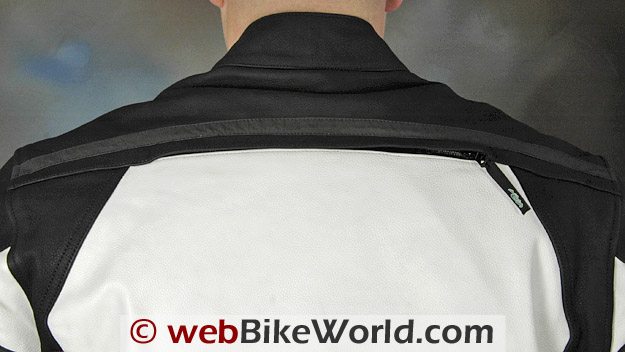


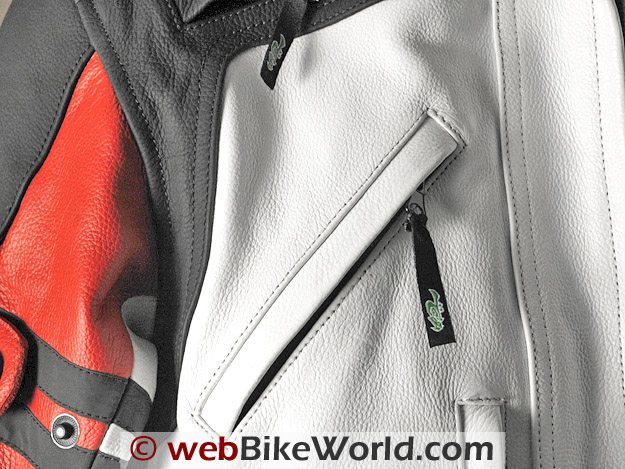


However, the Camino jacket also is no slouch when it comes to keeping its wearer cool. I didn’t mention this before but in addition to two obvious front zippered vents at the upper chest, the Camino also has two more front vents at the upper shoulders. They can be recognized in the photos by the zippers.
The Camino jacket also has a surprise: it features underarm sleeve vents of the style that are a highly regarded feature of the famed Aerostich Darien (review).
It’s been puzzling to many motorcycle riders why others haven’t copied this very successful location for a vent.
The Camino includes a vent along the upper back that when opened, helps flow the air through and out the low pressure region behind the rider.
The vents in the front may not be as effective as they could, mostly because they form simple slits when the zippers are opened, so they don’t scoop a lot of air through.
All of the zippers are of an unlabeled water-resistant type and I think this makes the zippers stiffer than normal and doesn’t really allow the vents to open very wide.
However, when all is said and done, the Camino at least has decent air flow in certain situations or combinations of rider position and motorcycle types (and speeds). Of course, the insulating liner should be removed for best results.
The insulating liner in the Camino jacket attaches will a full-length unbranded coil zipper that goes up one placket, around the back of the neck and down the other side. It ends several inches from the sleeve cuff and is attached with loops and snaps in the sleeve and on each side at the lower rear portion of the jacket.
Pockets
The Camino jacket has hand pockets on the outside at the lower section and also chest pockets on either side, for left- and right-handed riders. The zippers are of the water-resistant type. It also has a simple patch pocket inside which is formed by a section of nylon textile fabric.
The perforated Tioga jacket has a single external pocket, also with a water-resistant zipper. It is formed by what appears to be water-resistant material. The jacket does not have hand pockets or internal pockets.
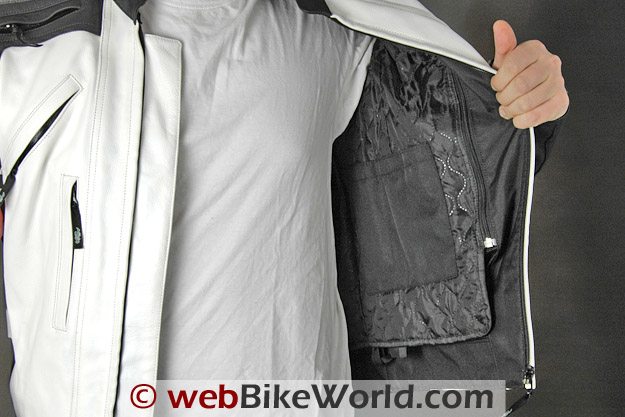


Pricing
The Camino non-perforated leather jacket has a list price of $399.00, not unreasonable for a good quality leather jacket of this type. The Tioga perforated version has a list price of $299.00.
Teiz Motorsports runs special deals on their website with substantial discounts when buying, for example, a jacket and pants combination. They also have a heated liner that is said to fit in both jackets and a discount is also applied when buying the liner along with a jacket.
Conclusion
I really like both of these jackets, but the Editor wants one back. He’s leaving the choice up to me! I think I’m probably going to keep the Tioga, as I think so far it has been perfect for the late spring/early summer riding weather. It just gives me a better feeling of security than wearing a mesh textile jacket.
However, the Camino jacket has a really solid feel and the thick leather seems like it would withstand the worst that could be thrown at it. It’s a tough choice!
I think both of these jackets are beyond the “typical” leather jackets I’ve seen, at least at this price range. I’m not saying they’re comparable with $600.00 Dainese or Spidi jackets, but at about half the price, the Teiz Motorsports products offer a lot of bang for the buck.
| wBW Review: Teiz Motorsports Tioga and Camino Jacket | |
|---|---|
| Manufacturer: Teiz Motorsports | List Price (2010): Camino $349.00. Tioga $299.00 |
| Colors: White/red/black or all black. | Made In: Pakistan |
| Sizes: S to 4XL. | Review Date: April 2010 |
Note: Item provided by a retailer, distributor or manufacturer with these Terms and Conditions.
Owner Comments and Feedback
See details on submitting comments.



